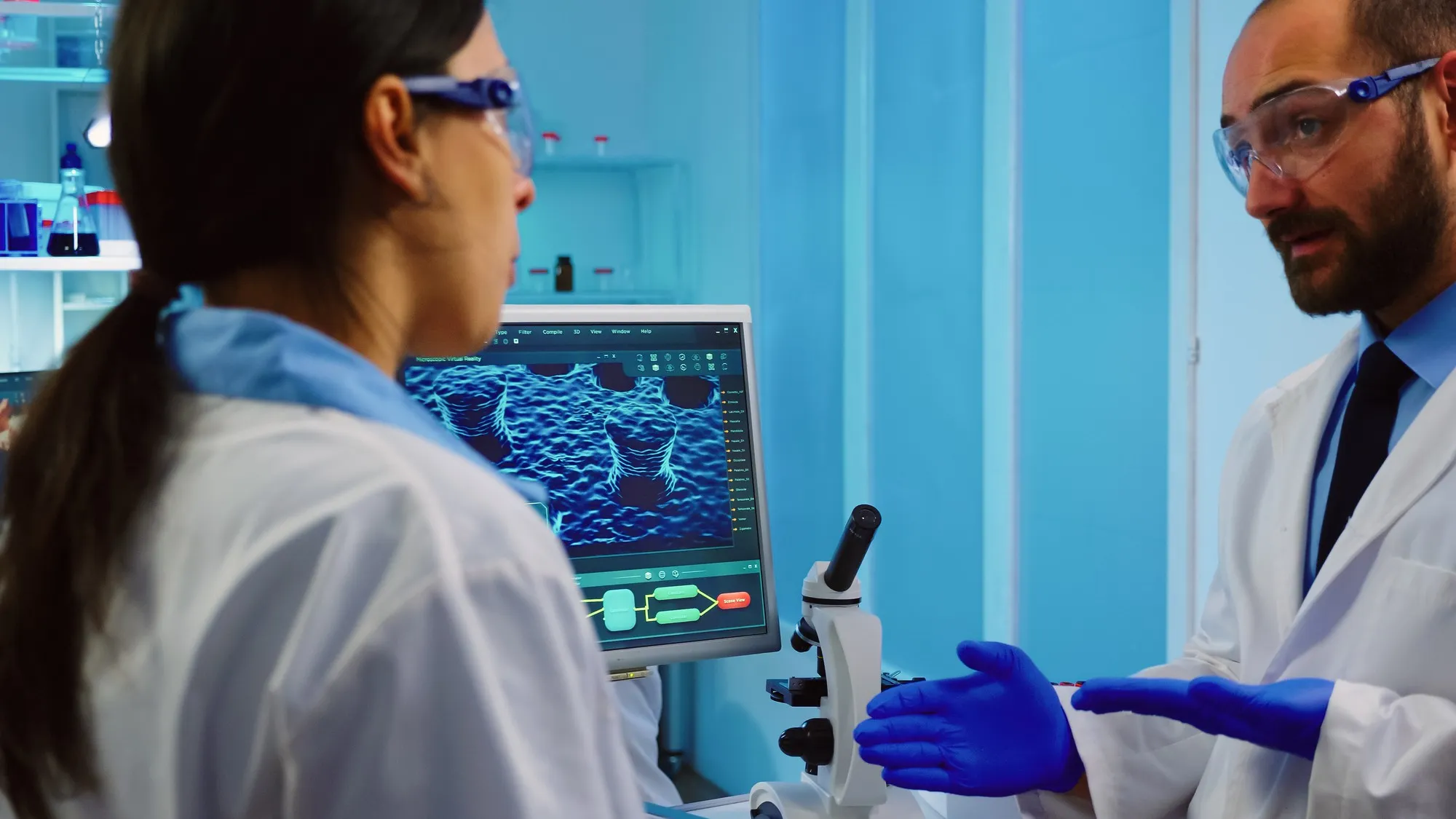In a world where medical anomalies challenge the norms of diagnosis and treatment, a rare case captured the focus of the medical community, revealing the tangled nexus between two distinct types of tumors. As published in the Chirurgia (Bucharest, Romania: 1990), a medical journal that serves as a platform for groundbreaking case studies, a young adult male patient presented with the dual diagnosis of a testicular teratoma in conjunction with a neuroendocrine tumor, a medical rarity that demanded a multifaceted approach towards management and therapy.
DOI: 10.21614/chirurgia.114.2.300
The convergence of these two distinct diseases has posed a unique challenge for the medical team led by Virgiliu Mihail Prunoiu. The case study, covered in the March-April 2019 issue of Chirurgia, chronicles the diagnostic journey and subsequent treatment of this unusual co-presentation, offering insight into a condition that lies at the intersection of current medical understanding.
Keywords
1. Testicular Teratoma
2. Neuroendocrine Tumors
3. Rare Cancer Cases
4. Oncological Treatment
5. Dual Tumor Diagnosis
Background on the Rare Case
The rarity of the case rises from the unusual pairing of a testicular teratoma with a neuroendocrine tumor. Teratomas are germ cell tumors typically containing tissues from more than one of the three germ layers. While historically considered rare, the incidence of testicular teratomas has been increasing, particularly in adult males. However, the concurrence with a neuroendocrine tumor, a type of cancer that arises from cells of the endocrine and nervous systems and can manifest in various parts of the body, adds layers of complexity to diagnostics, prognosis, and treatment strategies.
Diagnostic Journey
Diagnostic imaging played a pivotal role in the identification of the tumors. The patient underwent computed tomography (CT) scans that revealed not only the presence of a testicular mass but also secondary bone and lung neoplasms and retroperitoneal and lymphatic metastases, indicative of the aggressive nature of neuroendocrine tumors. Upon histological examination and immunohistochemistry analysis, the dual diagnosis was confirmed, marking the onset of a tailored therapeutic approach.
Therapeutic Approach and Challenges
The physicians, upon securing the dual diagnosis, recommended an orchestrated therapeutic regime focused on managing both the teratoma and the neuroendocrine components. The initial phase consisted of an orchiectomy to address the primary testicular tumor. This was followed by a vigorous chemotherapy regimen, leveraging antineoplastic agents known for their efficacy against aggressive neoplasms, and adjuvant radiotherapy aimed at containing the metastatic spread throughout the patient’s body.
However, the merger of a testicular teratoma with a neuroendocrine tumor elicited significant challenges—chief among them being the determination of the therapeutic focus. Favoring one treatment could potentially compromise the control of the other neoplasm. Hence, the balance was delicately established to optimize the patient’s outcome.
Conventional treatments for testicular cancers and neuroendocrine tumors differ significantly owing to the varied nature of these malignancies. While orchiectomy remains a common initial surgical procedure for testicular cancers, neuroendocrine tumors may necessitate varied approaches based on their location and the presence of metastases.
Outcomes and Conclusions
The outcome of the combined therapeutic approach was cautiously optimistic. The patient responded favorably to the treatments, with a regression in the size of the metastatic tumors as indicated in follow-up imaging. The chemotherapy and radiotherapy proved instrumental in reducing the systemic spread of the neuroendocrine tumor, while surgical intervention effectively managed the primary testicular teratoma.
The success of this rare case lies in the meticulous and personalized approach to cancer treatment, demonstrating the importance of a nuanced understanding of how varying oncological conditions can interact. The patient’s follow-up regimen was comprehensive, with continuous monitoring for recurrence or progression.
This case study has opened up discussions within the medical community about the need for further research on the intersection of different tumor types. By disseminating findings through scholarly articles, the team has contributed to a greater understanding of such rare combinations and emphasized the essential nature of individualized patient care in complex oncological cases.
References
1. Prunoiu, V. M., Marincaş, A. M., Alexandru, A., Radu, M., Proca, T. M., Răvaş, M. M., Brătucu, E., & Ionescu, S. (2019). A Rare Case of a Testicular Teratoma Associated with a Neuroendocrine Tumour. Chirurgia (Bucharest, Romania: 1990), 114(2), 300-306. doi: 10.21614/chirurgia.114.2.300
2. Bosl, G. J., & Motzer, R. J. (1997). Testicular germ-cell cancer. The New England Journal of Medicine, 337(4), 242-253. doi: 10.1056/NEJM199707243370406
3. Oronsky, B., Ma, P. C., Morgensztern, D., & Carter, C. A. (2017). Nothing But NET: A Review of Neuroendocrine Tumors and Carcinomas. Neoplasia, 19(12), 991-1002. doi: 10.1016/j.neo.2017.09.002
4. Modlin, I. M., Oberg, K., Chung, D. C., Jensen, R. T., de Herder, W. W., Thakker, R. V., Caplin, M., Delle Fave, G., Kaltsas, G. A., Krenning, E. P., Moss, S. F., Nilsson, O., Rindi, G., Salazar, R., Ruszniewski, P., & Sundin, A. (2017). Gastroenteropancreatic neuroendocrine tumours. The Lancet Oncology, 9(1), 61-72. doi: 10.1016/S1470-2045(07)70410-2
5. Siegel, R. L., Miller, K. D., & Jemal, A. (2016). Cancer Statistics, 2016. CA: A Cancer Journal for Clinicians, 66(1), 7-30. doi: 10.3322/caac.21332
The amalgamation of such diverse clinical disciplines—testicular teratoma and neuroendocrine tumors—in one patient’s experience is a rarity in medical literature. This case accentuates the essence of inter-disciplinary dialogue and the evolving complexity of oncological care. Future research directions might focus on the genetic and environmental factors contributing to such unusual presentations and the long-term effects of combined treatments on the quality of life for patients.
By extending the horizons of our knowledge and sharing deeply analyzed case studies, the medical community continues to advance in the perpetual battle against cancer, ensuring that each patient receives a fighting chance tailored to their unique condition. The medical world looks forward to more insights that can be gleaned from such exceptional cases.
